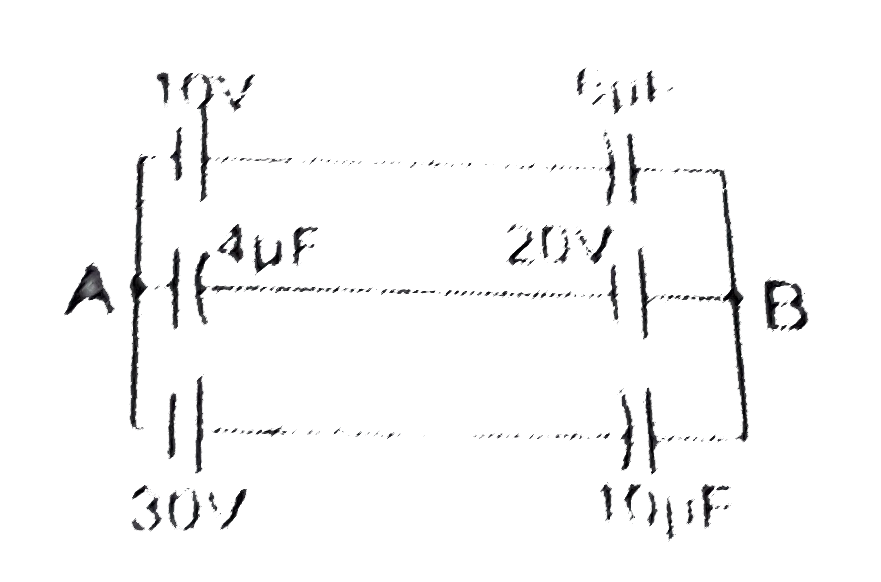potential difference between points A and B (i.e. VA−VB) is

2V
4V
8V
12 V
The correct Answer is:B
Step by step video & image solution for potential difference between points A and B (i.e. V_(A) - V_(B)) is by Physics experts to help you in doubts & scoring excellent marks in Class 12 exams.
Updated on:21/07/2023Topper's Solved these Questions
- DAILY PRACTICE PROBLEMBOOK - RESONANCE ENGLISHCHAPTER - DAILY PRACTICE PROBLEMEXERCISE - DPP No.70
9 Videos
- DAILY PRACTICE PROBLEMBOOK - RESONANCE ENGLISHCHAPTER - DAILY PRACTICE PROBLEMEXERCISE - DPP No.71
10 Videos
- DAILY PRACTICE PROBLEMBOOK - RESONANCE ENGLISHCHAPTER - DAILY PRACTICE PROBLEMEXERCISE - DPP No.68
9 Videos
- CURRENT ELECTRICITYBOOK - RESONANCE ENGLISHCHAPTER - CURRENT ELECTRICITYEXERCISE - High Level Problems (HIP)
19 Videos
- ELECTRO MAGNETIC WAVESBOOK - RESONANCE ENGLISHCHAPTER - ELECTRO MAGNETIC WAVESEXERCISE - Exercise 3
27 Videos
Similar Questions
The potential difference between points A and B is

View SolutionThe potential difference between points A and B is

View SolutionThe potential difference between points A and B is

View SolutionIn the circuit shown in the figure , no current flows through the 8Omega resistor, then the potential difference between points A and B(V_A - V_B) is
_PHY_E01_001_Q01.png)
View SolutionIn the given branch AB of as circuit a current I=(10t+5)A is flowing, where t is time in second . At t=0, the potential difference between points A and B(VA−VB) is

View SolutionFind the potential difference between the points A and B (VA−VB) as shown in figure. (Initially all the capacitors are uncharged)

View SolutionThe following figure shows a part of a circuit,the potential difference between C and B(VC−VB) is

View SolutionPotential difference between two points (VA−VB) in an electric field E=(2ˆi−4ˆj)N/C, where A=(0,0) and B=(3m,4m) is
View SolutionThe network shown in figure is a part of a complex network. When the potential difference between points B and A(VB−VA) is 15V, then the rate of change of current is

View SolutionIn the given circuit, if potential difference between points A and B is 4V. Then, resistance X is

View Solution
